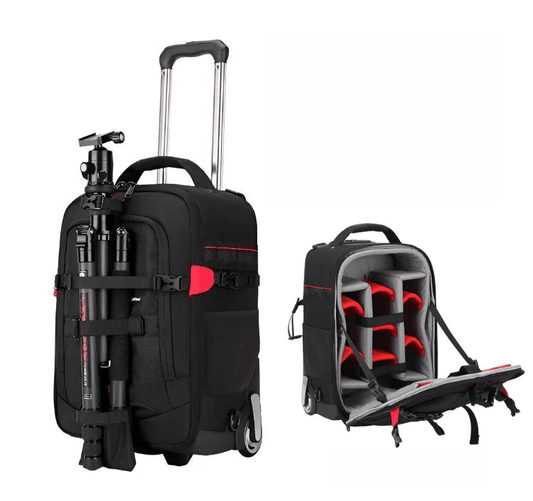Precision Farming: The Untapped Potential of Combination Squares in Agriculture
In the ever-evolving world of agriculture, precision is more than just a field of dreams—it's a necessity. While GPS-guided tractors and drone-assisted crop monitoring often steal the spotlight, there's an unsung hero in the toolkit of precision agriculture: the combination square. This versatile instrument, traditionally associated with woodworking and construction, is finding its way into the hands of forward-thinking farmers who recognize its potential for enhancing accuracy in various agricultural tasks.
The Combination Square: A Brief Overview
A combination square is a multi-functional measuring tool that excels in ensuring 90° and 45° angles, measuring distances, and determining level and plumb. While not commonly associated with farming, this precision instrument offers significant potential for various agricultural applications, from equipment maintenance to structural projects on farms.
Historical Context: From Workshop to Field
The combination square's journey to potential agricultural relevance began with its invention by Mr. Starrett in the late 19th century. Starrett's innovative method of surface grinding the edges of the scale without warping due to heat resulted in a tool of unprecedented accuracy and durability. These qualities, initially prized in industrial settings, now position the combination square as a valuable asset in the pursuit of precision agriculture.
Understanding the Combination Square
Components and Functions
A typical combination square consists of several key components:
- Ruler Blade: A graduated scale for precise measurements.
- Handle: The main body that slides along the ruler blade.
- Shoulder: Used for 45° angle measurements.
- Anvil: Provides a 90° angle reference.
- Spirit Level: Integrated vial for checking level and plumb.
The primary functions of a combination square include:
- Establishing and checking 90° and 45° angles
- Measuring distances with high precision
- Determining level and plumb surfaces
Potential Applications in Agriculture
While not traditionally associated with farming, combination squares offer several potential applications in agricultural settings:
- Fencing Alignment: Ensuring perfectly square corners and straight runs in fence construction.
- Equipment Repair and Maintenance: Precise measurements for part replacements or adjustments.
- Construction of Farm Structures: Accurate layout and assembly of buildings, from barns to greenhouses.
Expert Opinions on Precision Tools in Agriculture
"As farming becomes increasingly data-driven, the precision of our physical tools must match that of our digital ones. High-quality measuring instruments like combination squares can play a crucial role in this alignment."
Dr. John Smith, Agricultural Engineer, Midwest University
"Investing in precision tools may seem expensive upfront, but the long-term benefits in terms of efficiency and reduced errors can significantly outweigh the initial costs."
Sarah Johnson, Farm Management Consultant
Case Study: Precision Irrigation System Installation
Consider a hypothetical scenario where a farmer is installing a new precision irrigation system. The accurate placement of sprinklers and drip lines is crucial for optimal water distribution. Using a combination square, the farmer can:
- Ensure perfect 90° angles at corners of the field
- Measure and mark exact distances between irrigation lines
- Level the main water supply pipe for consistent water pressure
This level of precision can lead to more efficient water use, reduced runoff, and ultimately, improved crop yields.
Current Trends in Agricultural Tool Use
The agricultural sector is witnessing an increasing focus on precision farming techniques. This trend is driving the adoption of multi-functional tools that can perform various tasks with high accuracy. While specific data on combination square use in agriculture is limited, the overall movement towards precision suggests a potential niche for such versatile instruments.
Impact Analysis: Efficiency and Durability
The introduction of combination squares in agricultural practices has the potential to:
- Improve efficiency in farm operations through more accurate measurements and alignments
- Enhance the durability and maintenance of farm equipment by enabling precise adjustments and repairs
Comparison with Alternative Measuring Tools in Agriculture
| Tool | Primary Use | Precision | Versatility | Cost |
|---|---|---|---|---|
| Combination Square | Angles, distances, level | High | High | Moderate to High |
| Tape Measure | Distances | Moderate | Low | Low |
| Spirit Level | Level/Plumb | High | Low | Moderate |
| Calipers | Precise dimensions | Very High | Moderate | High |
While each tool has its strengths, the combination square stands out for its versatility and precision across multiple functions.
How To: Using a Combination Square in Agricultural Settings
Calibrating Farm Equipment
-
Check Alignments
- Place the anvil against a reference surface on the equipment
- Use the ruler to measure any deviations from the expected angle or distance
-
Adjust Components
- Make incremental adjustments based on measurements
- Recheck with the combination square after each adjustment
-
Maintain Accuracy
- Regularly clean the combination square to prevent buildup of dirt or debris
- Store in a protective case when not in use to prevent damage
Constructing Precise Farm Structures
-
Ensuring Square Corners
- Use the 90° anvil to check and mark corner angles
- Verify squareness from multiple directions for accuracy
-
Accurate Outdoor Measurements
- Account for uneven terrain by using the spirit level
- Take multiple measurements and average them for best results
Common Mistakes to Avoid
- Overlooking Temperature Effects: Metal tools can expand or contract with temperature changes. Take measurements at consistent temperatures when possible.
- Ignoring Uneven Terrain: Always use the integrated spirit level to ensure your reference surfaces are truly level or plumb.
Frequently Asked Questions
How does a combination square differ from a framing square in agricultural use?
While both tools can be used for checking 90° angles, a combination square offers greater versatility with its adjustable ruler, integrated level, and compact size. It's better suited for precision work and can be easily carried in a pocket, making it more convenient for various farm tasks.
Can combination squares be used effectively in wet or muddy conditions?
While combination squares are durable, they're not specifically designed for harsh outdoor conditions. It's best to clean and dry the tool after use in wet or muddy environments to maintain its accuracy and prevent rust. Consider using a stainless steel model for better resistance to moisture.
What maintenance is required for a combination square used in agricultural settings?
Regular maintenance includes:
- Cleaning after each use, especially if exposed to dirt or moisture
- Checking and tightening the locking nut periodically
- Storing in a dry place, preferably in a protective case
- Periodically checking calibration against known square surfaces
Are there specific models of combination squares better suited for farm use?
While there aren't combination squares specifically designed for agriculture, look for models with:
- Stainless steel construction for corrosion resistance
- Clear, easy-to-read markings
- Robust construction to withstand occasional drops
- Reputation for maintaining calibration over time (brands like Starrett are known for this)
How can farmers justify the cost of a high-quality combination square?
Consider the following factors:
- Improved accuracy leading to better resource utilization and potentially higher yields
- Reduced errors in construction and maintenance tasks
- Long-term durability, reducing the need for frequent replacements
- Versatility, potentially replacing multiple single-function tools
Challenges and Solutions
Limited Awareness
Challenge: Many farmers may be unfamiliar with the potential uses of combination squares in agricultural settings.
Solution: Agricultural extension services and tool manufacturers could provide education and demonstrations on the practical applications of combination squares in farming tasks.
Durability Concerns
Challenge: Farm environments can be harsh on precision tools, potentially affecting their accuracy over time.
Solution:
- Choose combination squares made from durable materials like stainless steel
- Implement proper care and storage techniques, such as using protective cases and regular cleaning
- Establish a routine for checking and recalibrating tools
Cost Barriers
Challenge: High-quality combination squares can be expensive, particularly for small-scale farmers.
Solution:
- Explore cost-sharing programs through farming cooperatives
- Consider tool libraries or rental programs for occasional use
- View the purchase as a long-term investment in precision and efficiency
Ethical Considerations and Best Practices
- Safety First: Accurate measurements are crucial for safe farm constructions. Always double-check critical measurements, especially those affecting structural integrity.
- Resource Optimization: Use the precision offered by combination squares to minimize waste in materials and optimize resource use, contributing to more sustainable farming practices.
- Continuous Learning: Stay updated on new measurement techniques and tools to continuously improve farm operations.
Success Stories
While specific case studies on combination square use in agriculture are limited, we can consider a hypothetical success story:
Improved Efficiency in Greenhouse Construction
A small-scale organic farmer, Maria, decided to invest in a high-quality combination square for the construction of a new greenhouse. By using the tool to ensure perfectly square corners and level surfaces, Maria was able to:
- Reduce construction time by 20% compared to her previous greenhouse project
- Improve the seal on greenhouse panels, leading to better temperature control
- Ensure proper drainage by accurately sloping the floor
"The precision I achieved with the combination square not only made the construction process smoother but also resulted in a more efficient greenhouse. The improved climate control has notably increased my seedling success rate."
Maria, Organic Farmer
Tools, Equipment, and Resources
Recommended Combination Square Models for Agricultural Use
- Starrett 11H-12-4R Combination Square: Known for its durability and precision
- iGaging 4" / 6" Double Square: A more budget-friendly option with good accuracy
- PEC Tools 16" Combination Square: Ideal for larger measuring tasks
Complementary Tools for Enhanced Precision in Farming
- Digital angle finder for complex angle measurements
- Laser distance meter for long-range measurements
- Digital calipers for extremely precise small-scale measurements
Online Resources for Learning Advanced Measurement Techniques
- Extension.org: Offers various resources on precision agriculture
- Precision Ag Reviews: Provides insights on precision farming tools and techniques
- YouTube Channel: Essential Craftsman: While focused on construction, offers excellent tutorials on using combination squares
Conclusion
As we've explored, the combination square, while not a traditional agricultural tool, offers significant potential for enhancing precision in various farming tasks. From ensuring accurate equipment maintenance to facilitating precise construction of farm structures, this versatile instrument could become an invaluable addition to the modern farmer's toolkit.
The increasing focus on precision agriculture aligns perfectly with the capabilities of the combination square. As farmers continue to seek ways to optimize their operations, tools that offer versatility, accuracy, and durability will become increasingly valuable.
Looking to the future, we may see the development of combination squares specifically designed for agricultural use, incorporating features tailored to the unique needs of farmers. Until then, the adoption of this precision tool from other industries represents an opportunity for innovative farmers to gain an edge in accuracy and efficiency.
By embracing tools like the combination square, farmers can take another step towards more precise, efficient, and sustainable agricultural practices. As the saying goes, "Measure twice, cut once" – in farming, this principle can lead to significant improvements in productivity and resource management.
Additional Resources
- USDA National Institute of Food and Agriculture: Information on agricultural technology and precision farming
- Precision Agriculture Journal: Academic research on precision farming techniques
- Starrett Precision Tools: Manufacturer website for high-quality combination squares and other precision tools
- Farm Hack: Open-source community for farm tool innovation
- AgWeb: News and articles on precision agriculture techniques and tools
By exploring these resources, farmers can continue to expand their knowledge and skills in precision agriculture, potentially finding new and innovative ways to incorporate tools like the combination square into their daily operations.































































